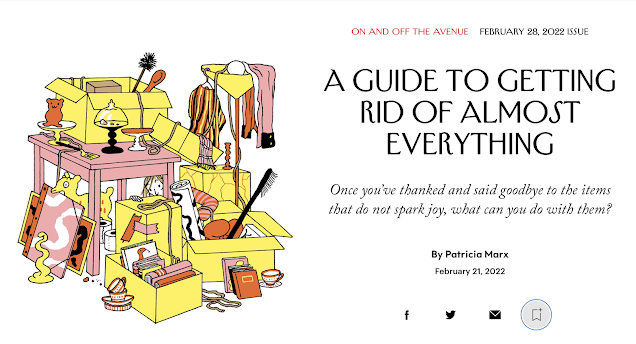The bequest of quality
 After this month's bleak job-loss statistics, I wondered about the relevance of some of my posts. I've decided to keep on writing about beautiful, well-made objects even though some of us (including me) can't afford them.
After this month's bleak job-loss statistics, I wondered about the relevance of some of my posts. I've decided to keep on writing about beautiful, well-made objects even though some of us (including me) can't afford them.Fine craftspeople and artists continue creating, despite the times. The same philosophy I endorse about personal style as one ages- that we don't need to look drab, run-down or dowdy- applies to spending.
People are waking up to the old notion that a thoughtful choice, anchored by the requirement for quality is far more prudent than buying an aspirational, over-priced brand. And if the times mean buying nothing, it's time to reach into the closet and hope what we've chosen is durable and pleasing for the duration.

A friend's father bought a English-made navy suit in his late 70s. "This will see me out", he told her. Though unnerved at this reference to death, she understood his values: buy the best you can afford and make it last. Dr. E. wore the suit for twelve years; his grandson wears it now.
Some of the most-desired vintage clothes, jewelry and objects were made during the Depression and recessions. Talent is not dictated by the economy. People joke that the clothes they have now are the ones they'll have for life. If
 that were so, would you enjoy your wardrobe?
that were so, would you enjoy your wardrobe?My mother, married in the depths of the Depression, had thrift and caution as life-long companions. She made aprons from my old skirts. When the aprons wore out, she made potholders from the scraps. But she'd buy an emerald silk velvet evening cape, or a loden-cloth coat that lasted for decades.
When prosperity returned, she never reflexively bought just because she could; she craved beauty and insisted on quality.
My purpose in showing a breathtaking ring or elegant cashmere is not to urge "recession-beating personal spending"; I doubt that's as effective as some economists think.
It's to lift the spirits and celebrate the gifts of artists in our time, and before. To remind us to choose with care, enjoy what we have, and perhaps leave to the next generation.



Comments
Deja Pseu: We do need it and I'm worried that many makers will evaporate as the market rules.
ma: Le Duc has a trenchcoat of my Dad's, too. I'm guessing you ate your share of banana bread.
GP: I like the insouciance of a woman in a tux! And your eBay find- impressive. (What took them so long to figure out it's a recession?)
Wendy: Good, as you are one of the creators of that beauty.
Clothing used to be so expensive. That's why our closets weren't stuffed. It's hard not to over-accumulate when things are so inexpensive.
I'm trying to be more "French" in my shopping--i.e. a few nice things, worn to death.
Thanks for the interesting post.
I love quality and beautifully made things and have some my grandmother's and great-grandmother's. DH has a Brooks Brothers tweed jacket made in the 50's that is in better shape (except for the elbows which have been patched) than the newer version of the same thing he bought in the 80s after Brooks was just becoming another retail commodity.